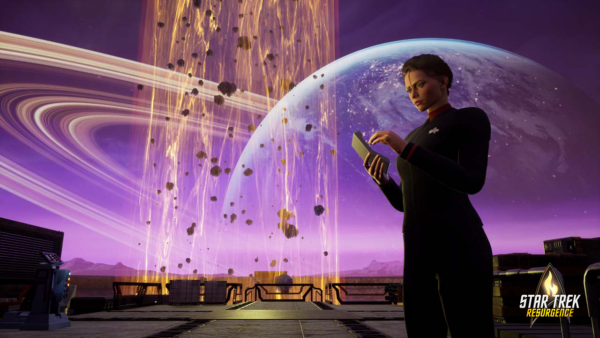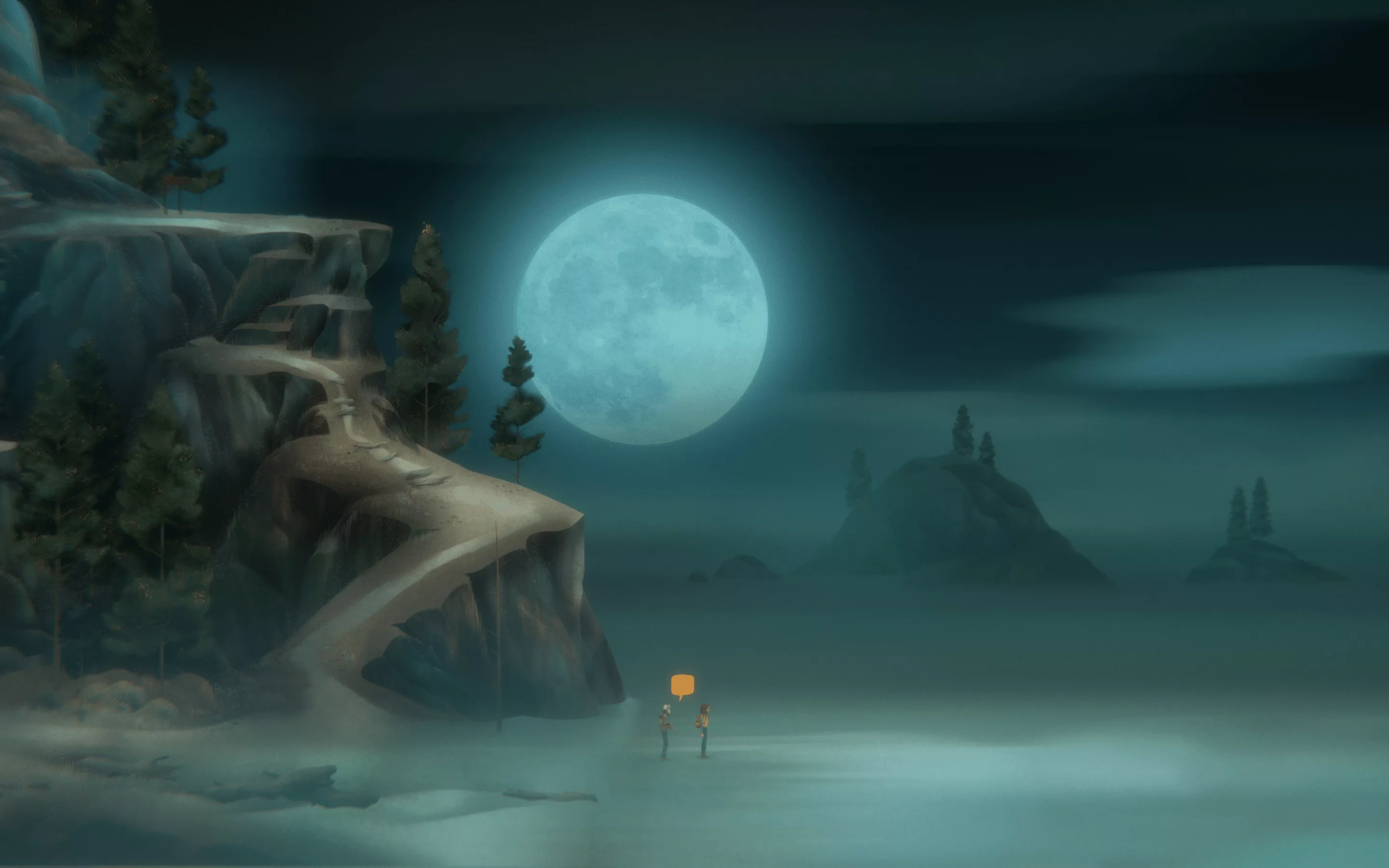
Night School Studio crafts another supernatural adventure full of humanity and sassy charm. Our review of Oxenfree II: Lost Signals:
In the world of Oxenfree, as deftly crafted by Night School Studio, reality is a fragile thing. Like the radio signals that inform its stories, voices and even alternate futures can fade in and out. Time can stop altogether in an alarming burst of static, or skip tracks like a record. It’s a spine-jangling concept that, coupled with fresh writing and storytelling, made the first Oxenfree one of the most memorable indie games of 2016 – an almost perfect balance of Strange Things-style cosy nostalgia and actual dramatic substance.
Set five years after the original, Oxenfree II takes place on Camena Coast, a quiet mainland community just a short boat ride away from Edwards Island. There are little shops, churches and dwellings carved out among the rocky hills, while rickety bridges, abandoned mines and caves filled with old murals create the impression of a place that has barely changed in 200 years.
Enter Riley Poverly, a thirty-something protagonist who has spent years away from the sleepy community, but thanks to a series of life events that become clear as the game unfolds, feels compelled to return to her Camena roots. Now an environmental researcher, she agrees to spend a quiet evening setting up transmitters in the hills, with the faintly eccentric Evelyn, her boss who regularly cuts in via Walky Talky, serving as her guide.
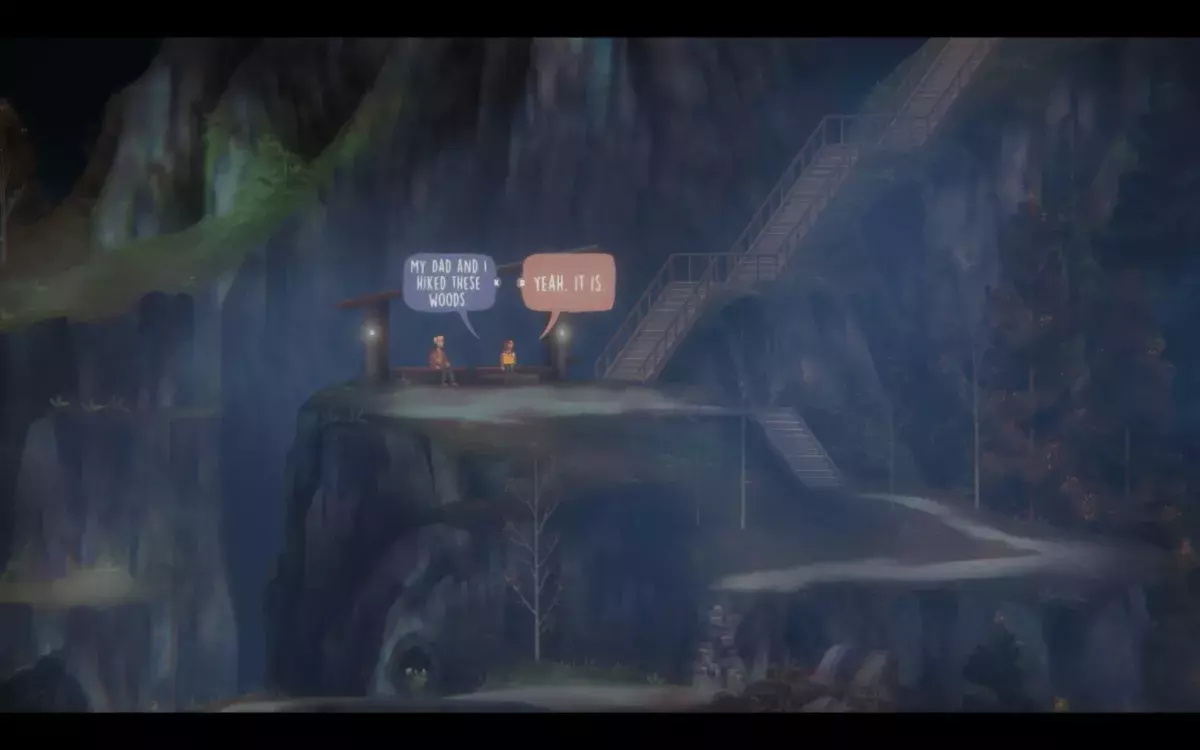
Dialogue choices don’t always change your path through the game, but they reliably bring variety and life to the characters’ exchanges. Credit: Night School Studio.
It doesn’t take long, though, before Riley begins to experience similar supernatural events to those Alex and her friends shuddered through in the first Oxenfree. A buzz and a crackle later, and Riley finds herself re-living the same events again. Strange voices jeer and cajole her over a radio. Red eyed beings appear and then vanish. Before long, Riley discovers that she’ll have to use her transmitters not just for scientific purposes, but to prevent reality itself from being torn apart.
The chills and puzzles are familiar from the first game, but the older, more cynical cast greatly change Oxenfree II’s flavour. Riley is a brilliantly capable, salty lead, and a marked contrast to the wide-eyed naivety of the first game’s Alex and friends. Joining Riley is Jacob Summers, an affable, half-forgotten high school friend whose lack of athletic prowess soon becomes endearingly apparent. Camina’s more jagged terrain means you’ll spend as much time in Oxenfree II climbing as you do walking; the locations and clues you need to get to are frequently reached by clawing your way up rock faces or rappelling down ropes in dank, barely-lit caves.
Climbing isn’t particularly complex – there are no Breath of the Wild-style stamina bars, for example – but it adds to the story’s slowly-building air of tension. Similarly, the map can hardly be called open-world, but it offers enough paths and digressions to create the illusion of a much larger, explorable space that, thanks to Night School’s reliably lovely, painterly visuals, is a pleasure to roam.
What undoubtedly /is/ complex, though, is Oxenfree II’s dialogue system, where you’re regularly given a handful of responses to choose from during conversations. Even more so than the first game, dialogue flows into each other almost seamlessly, creating the impression of naturalistic, everyday conversation even if, say, a dialogue choice you’ve just made during a chat with Jacob is interrupted by a call from Evelyn on your Walky Talky.
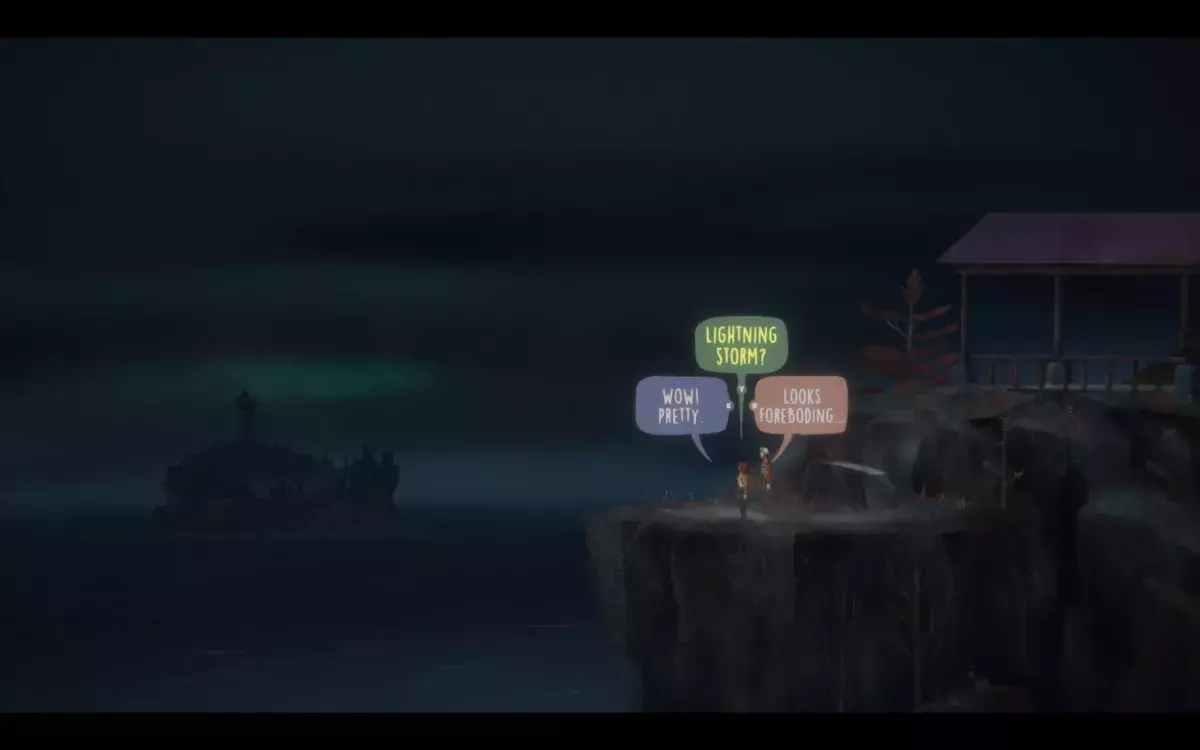
Night School has previously said you don’t have to be familiar with the first game to enjoy Oxenfree II. Without spoiling things, we’d say it’s better to play the original first. Credit: Night School Studio.
During one back-and-forth with Evelyn, I discovered a piece of paper on the ground – one of about a dozen notes from Maggie Adler you’ll find dotted around Camina – and the game smoothly blended Evelyn’s chatter with Riley’s reaction to her discovery. Evelyn then paused, and continued her ramble with a, “So, as I was saying…”
It’s technically ingenious, and I can only guess at how many hours were put into making it all seem so natural and effortless.
Like the first game, the dialogue choices you make can have far-reaching effects on the plot. This is particularly true when it comes to the Parentage – a creepy cult of mask-wearing kids who have their own interest in manipulating Camina’s ghostly signals. Jacob is often openly antagonistic towards the masked tear-aways; how you choose to interact with them will have a fairly major bearing on which ending you see.
Oxenfree wasn’t a hugely long game – the main story lasted around five hours – and its sequel is similarly compact. One criticism I have with Oxenfree II, in fact, is that, after an eerie and suspenseful build-up in the first few hours, the conclusion wrapped up a little too quickly. The game arms you with interesting tools – your analogue radio is now joined by the aforementioned Walky Talky, and there are also those new climbing mechanics – but the number of puzzles I was asked to solve with them was surprisingly few.
If Oxenfree II feels as though it’s over too soon, then it at least provides plenty of reasons to go back and experience it again. To date, I haven’t found all of Adler’s hidden notes, and there are dozens of alternate dialogue choices and alternate endings to uncover. Most of all, Oxenfree II’s characters and themes – about regrets, disappointment, opportunities not taken – resonate to such an extent that you’re likely to want to delve back into the game again just to spend a little more precious time with them.
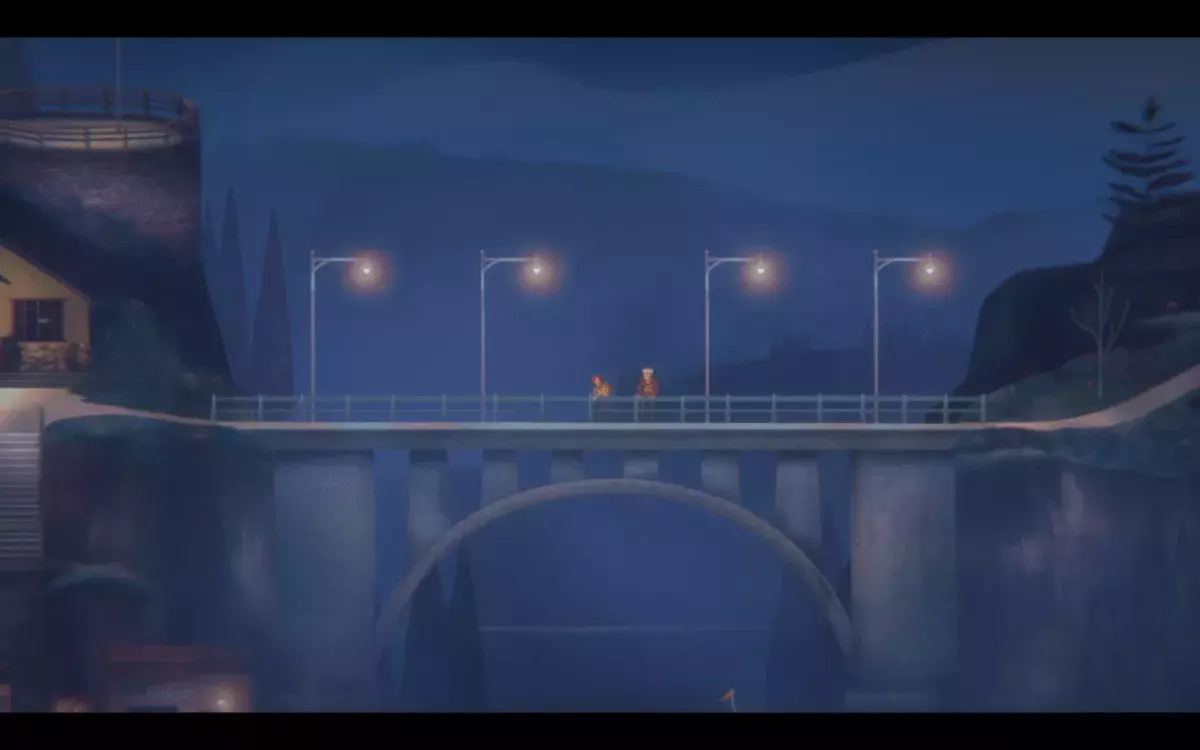
The zoomed-out camera plays a major part in generating Oxenfree II’s uneasy, supernatural tone. Credit: Night School Studio.
Highlight:
The developers’ use of framing is an easily-overlooked yet quite brilliant weapon in the Oxenfree games’ storytelling. Here, even more so than in the first game, the constant use of long shots, with the characters constantly dwarfed by the vastness of the landscape, makes them seem all the more human and vulnerable.
Verdict: 84%
A brief yet immersive supernatural adventure that brims with personality and warmth.


